2024 cap space landscape: The outlook for each NBA team

With the 2024 NBA trade deadline in the rearview mirror, rosters are, for the most part, decided. The trade deadline is not the same thing as a roster deadline, and teams are permitted to make signings and waivings up to and including the last day of the regular season. Nevertheless, rarely if ever do those post-deadline moves make an impact on the team’s cap pictures in future seasons, and thus fairly accurate assessments of how each franchise lines up for the upcoming offseason can be made.
In the NBA’s most recent projections, the 2024-25 salary cap is estimated to be coming in at $141 million, still an increase from this season’s $136,021,000 but a slight decline from the previous projections. This nonetheless still represents a figure that is more than double what it was as recently as 2015-16. Team spending has however grown just as much, if not more, and so while many seasons since 2016 have seen plenty of cap space available around the league – certainly much more than across the previous decade, when a far slower rate of growth meant only a handful of teams having any every year – this number will be reduced this season.
Nonetheless, even though offseason trades, the instability of draft night, future extensions and contract options can all significantly change matters, there follows a look at each NBA team’s 2024-25 projected spending as things currently stand.
Philadelphia 76ers
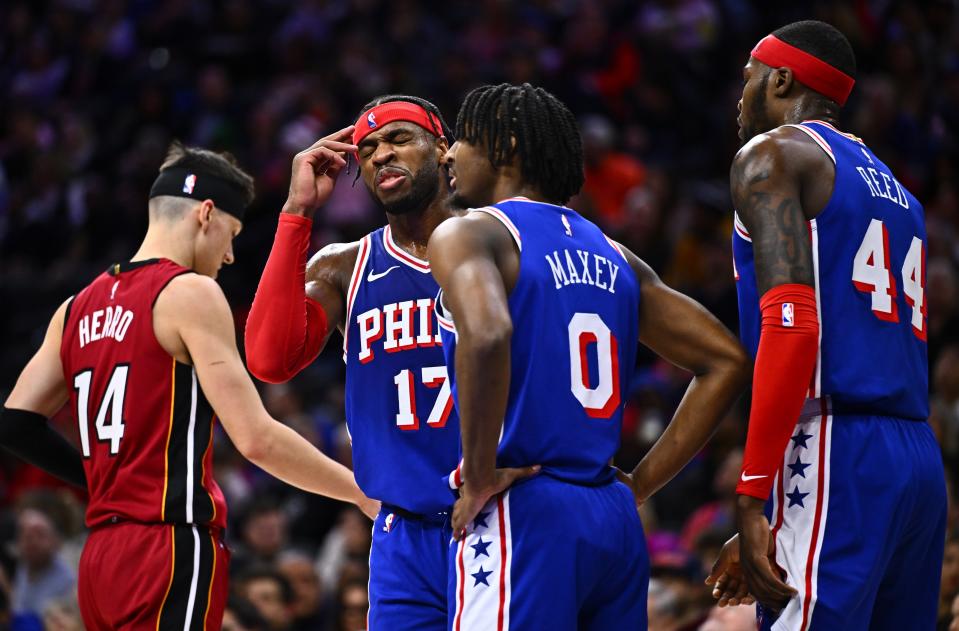
2024/25 Cap Figure: $59,138,938
Cap Space Projection: Maximum cap space, but not two of them
In 2024-25, the 76ers have Joel Embiid under contract for $51,415,938, Paul Reed under contract for $7,723,000… and that’s it. That is not to say, though, that the other $82 million is all available to free agents. Cap holds for free agents and roster spots will cut into that, and while Tobias Harris, Buddy Hield and De’Anthony Melton might depart in free agency, Tyrese Maxey definitely will not. Each one who stays cuts into that space, and although a deal to re-sign Maxey can be timed in such a way to maximize cap space, the realistic path to having maximum space involves a lot of departures first. Then again, the cap space plan has been in the works for a while, and so expect the 76ers to be the premium free agency destination this summer.
Detroit Pistons

2024-25 Cap Figure: $65,883,091
Cap Space Projection: As-near-as-is a max salary and a half
Having made a confusing smorgasbord of deals that have seen them take on second-round picks by cutting into their cap space, give out second-round picks to cut into their cap space, and also give out second-round picks to free cap space up again, the only thing we can say for certain is that Pistons will still have quite a lot of it. Joe Harris’s near-$20 million salary is gone, Evan Fournier’s soon will be, and the combined $20 million of Killian Hayes and James Wiseman has only a few weeks left in it. Of the remaining salaries, Cade Cunningham, Ausar Thompson, Jaden Ivey, Isaiah Stewart, Quentin Grimes and Jalen Duren combine for $54,127,862, with $9 million more owed to the pairing of Shake Milton and Troy Brown that can be moved around if needs be. Subtract a few more million for their first-round pick… and then the rest is entirely up for spending, assuming anyone wants it.
Toronto Raptors

2024/25 Cap Figure: $80,051,246
Cap Space Projection: Max space, with caveats
Having dismantled the remains of their title-winning team, cap space is now available and advised. Bear in mind, though, that the figure outlined above does not include the $23 million potentially owed to Bruce Brown in his team option year. Brown is a very good player and one with trade value, so while he is not (and will not be) eligible for an extension, exercising this option is the only way to retain that value. And if that happens, then unless other moves are made, Toronto will go from being able to offer a maximum-value contract to offering roughly half of one.
Orlando Magic
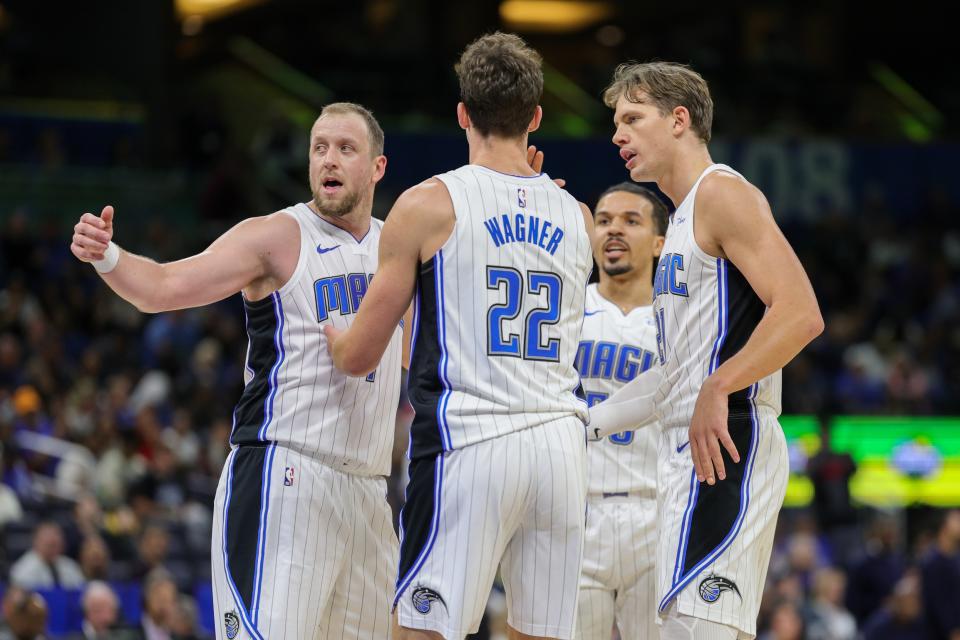
2024/25 Cap Figure: $85,511,895
Cap Space Projection: Potentially $50-60 million
$30 million combined will expire in the forms of Markelle Fultz and Gary Harris this summer, and if either or both are retained, it will surely not be at those price points. A further $19 million could be added if the team options for Joe Ingles ($11 million) and Mo Wagner ($8 million) are exercised. But while the latter two are both doing the jobs asked of them, the Magic – if they cut ties with all four, and also take advantage of the big savings that can be offered by waiving Jonathan Isaac’s partially guaranteed deal – have the opportunity to be big-time cap space players. It would be a shame and an error to pass that up. With both Wendell Carter’s incredibly team-favorable deal and Paolo Banchero’s rookie contract providing discounts until 2026, Orlando should lean into their potential $50-60 million in cap space while they still can.
Utah Jazz
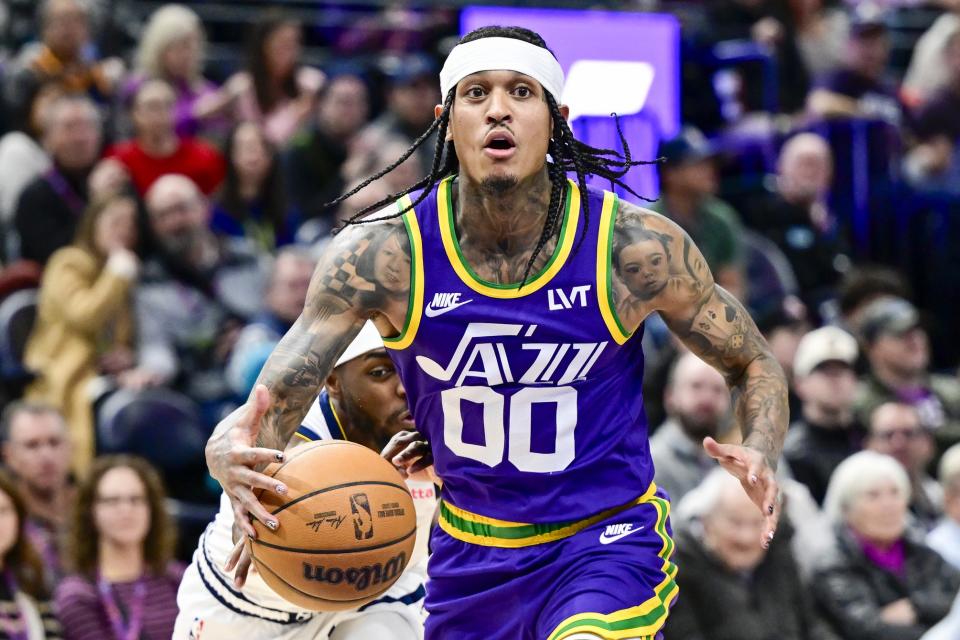
2024/25 Cap Figure: $92,921,090
Cap Space Projection: A theoretical $41 million
The Jazz figure to have one of the largest amounts of cap space anywhere in the league. That $92,921,090 figure above speaks to roughly $41 million in cap space, once roster holds are discounted, and it is a number that can be improved further if Jordan Clarkson is moved. It does however come with caveats; firstly, an extension to the highly-deserving Walker Kessler will begin in 2025-26 and needs to be budgeted for, while 2024-25 is also the last season on Lauri Markkanen’s contract. At $18,044,544, Markkanen is underpaid for his services, and so breaking off a chunk of that provisional cap space in order to give him a raise with a concurrent extension added – akin to what the Sacramento Kings did last season with Domantas Sabonis – should take priority over any external recruits.
Oklahoma City Thunder

2024-25 Cap Figure: $97,224,764
Cap Space Projection: Potentially in the region of $20 million
Because so many of their rotation players are still in rookie scale contracts, the Thunder remain cheap for how good they are, and already have their main bit of business dealt with by extending Shai Gilgeous-Alexander through 2027. Of note though is the fact that they dealt three contracts that did not expire this summer (Davis Bertans, Tre Mann and Vasilije Micic) to the Charlotte Hornets in exchange for one massive one that does (Gordon Hayward, $35 million). As always with the Thunder, their plethora of outstanding draft picks puts so many trade possibilities on the table (and their holds taking some cap space off it) that it is extremely difficult to project what they will do, given all the variables in play. But with that deal, they have given themselves one chance at an above-MLE free-agency signing before all the young players start to get expensive.
Indiana Pacers

2024-25 Cap Figure: $105,456,907
Cap Space Projection: Likely to operate as an over-the-cap team; not tax-threatened
The Pacers could in theory have a good amount of cap room as constructed, but in reality, they traded for Pascal Siakam with the intent and understanding that they would re-sign him. Working on the assumption that this will cost them a maximum salary of $42.3 million in 2024-25, the question then becomes, what is left. Moving on Buddy Hield for no committed long-term salary means having no other substantial other salaries to go with Siakam, aside from the max extension for Tyrese Haliburton beginning, one which no one has any issue with whatsoever. Between him and Siakam, the Pacers will be capped out, yet with approximately $24 million between themselves and the luxury tax threshold that should see them be able to use all available exceptions.
Charlotte Hornets
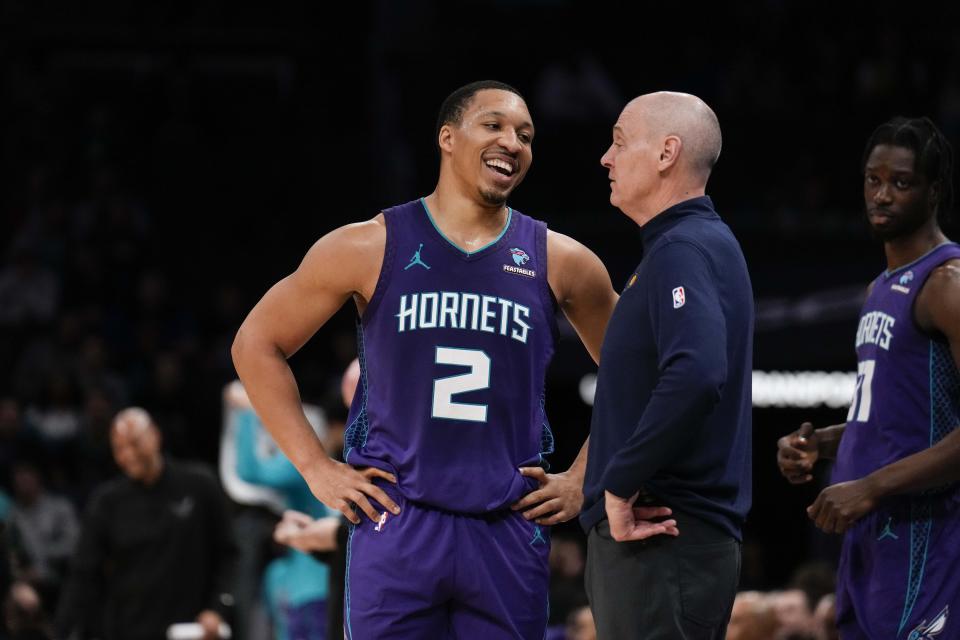
2024-25 Cap Figure: $110,736,480
Cap Space Projection: Likely to operate as an over-the-cap team; not tax-threatened
The flip side of the aforementioned Gordon Hayward trade is the fact that it meant the chance of cap space that the Hornets may have had is now gone. The swap of PJ Washington for Grant Williams further confirmed that, and any savings made by trading Terry Rozier were offset. Those new players, combined with the beginning of LaMelo Ball’s extension, keep the Hornets out of the cap space game this summer. Nevertheless, this was a deliberate plan, and being over the cap will not prohibit them from utilizing their available exceptions, for the luxury tax remains a long way off.
San Antonio Spurs

2024-25 Cap Figure: $115,915,954
Cap Space Projection: Between $20 to $26 million
The Spurs will want an opportunity in the near future to put some big money behind Victor Wembanyama’s supporting cast, but that time does not have to be now. Devonte’ Graham’s contract expires in 2025, and Zach Collins’s does in 2026, both before Victor’s max, so there is time to play with here. That said, the Spurs still figure to have about $20 million in space to work with this summer, a number that can increase if Graham’s contract is stretched or dumped. So while there is not a requirement to make the big moves now, the opportunity is there if they see someone worthwhile.
Washington Wizards
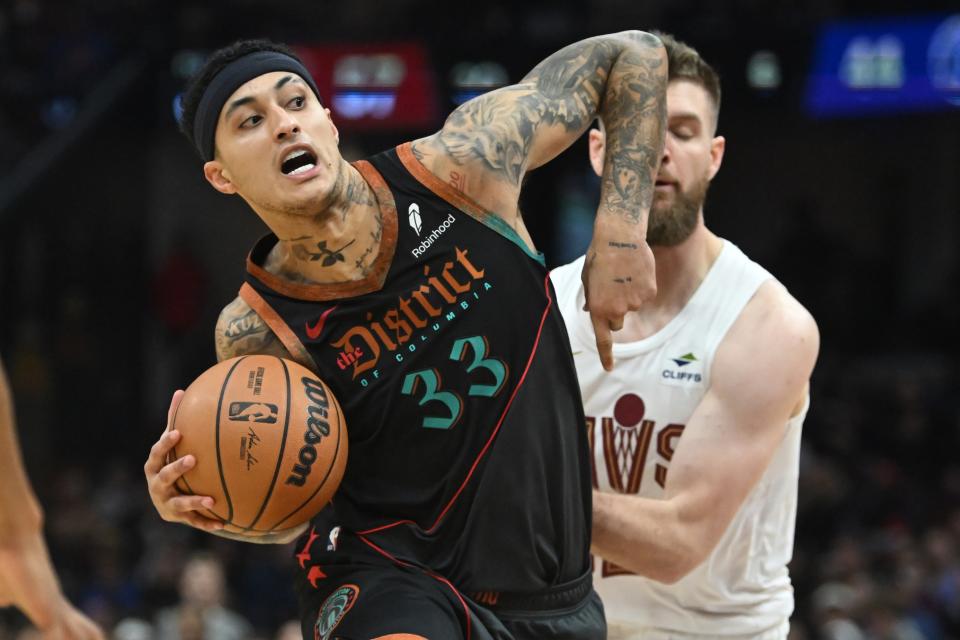
2024/25 Cap Figure: $126,667,149
Cap Space Projection: Likely to operate as an over-the-cap team; not tax-threatened
Having kept onto Tyus Jones and Kyle Kuzma at the deadline when there was a market for both of them – a particularly curious decision in the case of Jones, whose contract is expiring – it is hard to anticipate how a Wizards team in need of serious talent infusions intend to go about that. Then again, perhaps the intent is to relocate Jones via a sign-and-trade deal. If so, the Wizards will be operating as an over-the-cap team, which avails them the use of the full Non-Taxpayer Mid-Level Exception. Trading expiring salary for Marvin Bagley III’s contract when they did not have to seem to confirm that direction.
Houston Rockets
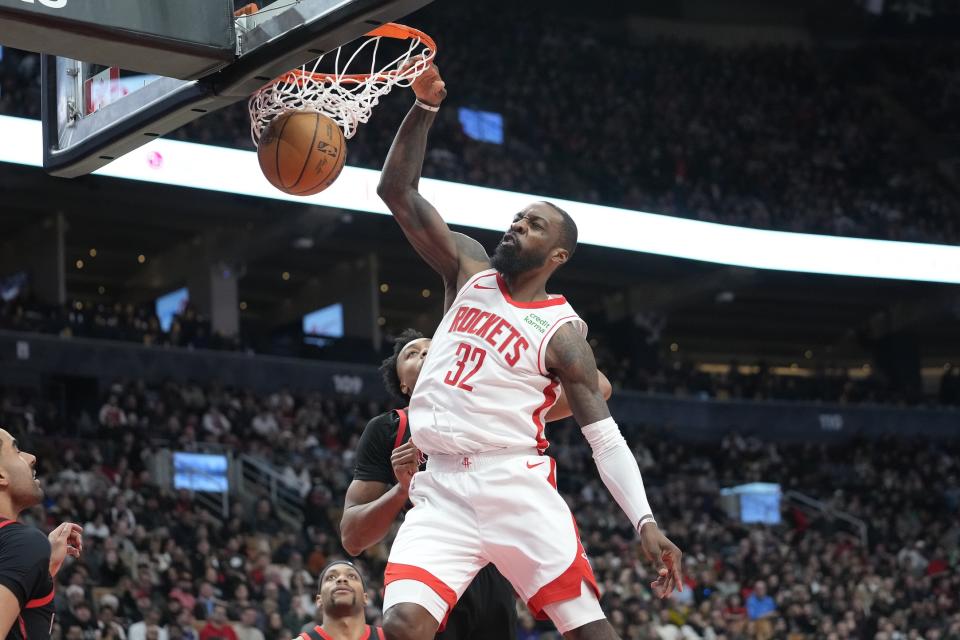
2024-25 Cap Figure: $129,704,666
Cap Space Projection: Likely to operate as an over-the-cap team; not tax-threatened
Trading for Steven Adams and his $12.6 million contract at the deadline added one MLE-sized contract to their 2024-25 books, without adding so much salary that they cannot add another. The team options of Jeff Green ($9 million) and Jae’Sean Tate ($7,065,217) can be declined to add further wiggle room under the luxury tax, and with no big extensions to their young core kicking in soon, the Rockets have a window to keep adding, even if they will have to do so without conventional cap room.
Chicago Bulls
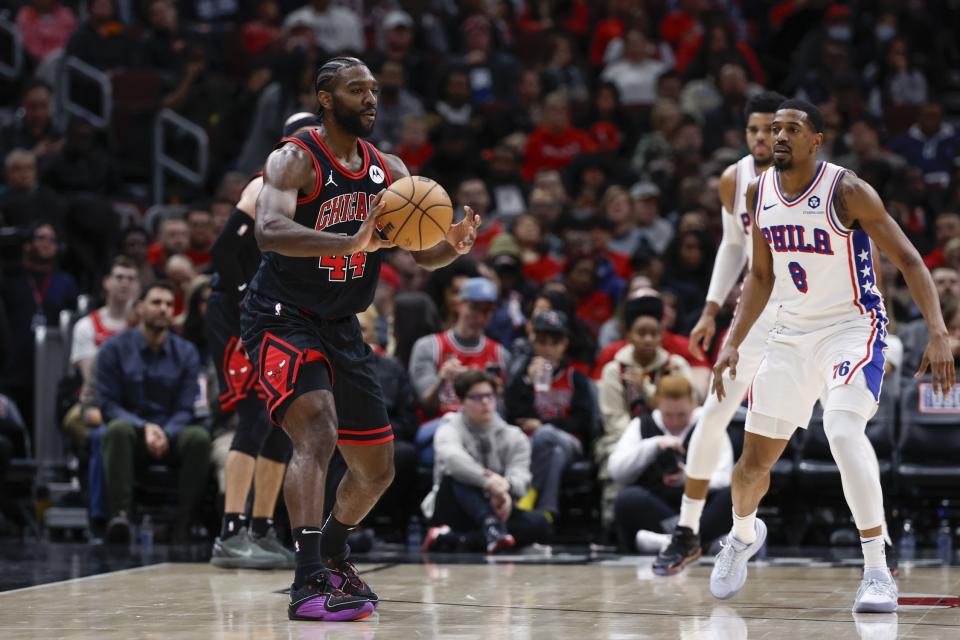
2024/25 Cap Figure: $130,261,937
Cap Space Projection: Likely to operate as an over-the-cap team; not unduly tax-threatened
The Bulls need a complete rework, but until they get one, they figure to remain an over-the-cap team. The above figure does not include either DeMar DeRozan or Patrick Williams, both of whom the team intends to re-sign – if they do not re-sign them, then delaying the inevitable rebuild of their current team would have been even less logical than it has been so far.
Brooklyn Nets
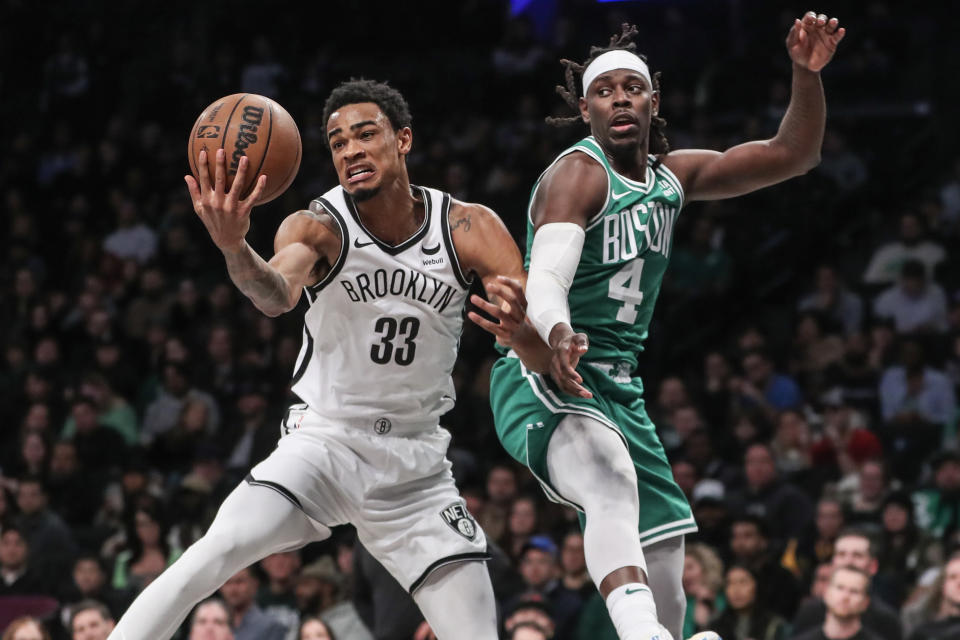
2024/25 Cap Figure: $132,255,851
Cap Space Projection: No cap space; somewhat tax adjacent
In the middle ground of the standings, in the center of the payroll charts and in a state of flux between the Durant/Harden era and the present, the Nets could pick any direction to go in. The most immediate bit of business, though, is the expiring salary of Nic Claxton, and a nine-figure deal to re-sign him shuts the door on any cap space projections that the above figure might allude to. Instead, the plan seems to be 2025, when Ben Simmons and Dennis Schroeder combine for $53 million in expiring deals, while Dorian Finney-Smith’s situation should be resolved by then. Mikal Bridges will not need a new contract until 2026, either, providing a useful window for talent acquisition that should not be closed off through too much urgency this year.
New York Knicks
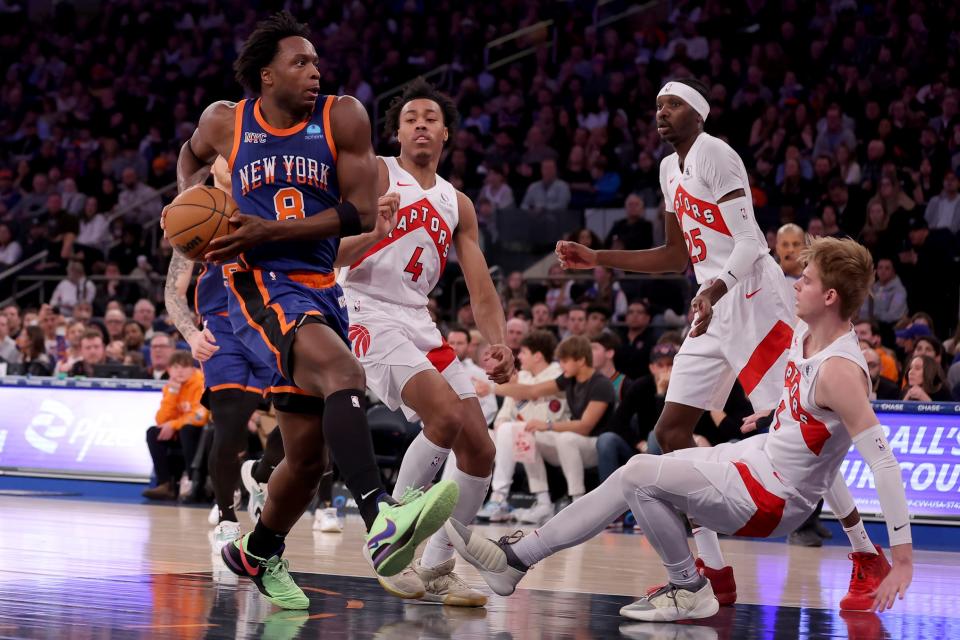
2024-25 Cap Figure: $142,856,508
Cap Space Projection: No cap space; tax adjacent
The trade for OG Anunoby had the added benefit of also clearing some immediate salary obligations, but at the price of knowing a new contract would soon be needed. Anunoby will decline his $19,928,571 player option, at which point the Knicks – already with six eight-figure salaries on the book for 2024/25 – will need to get close to the luxury tax to keep him. The money is there, of course. Yet the resultant loss of flexibility it entails could be a factor for a team that is only on the very fringes of the title conversation right now.
Cleveland Cavaliers

2024-25 Cap Figure: $146,521,939
Cap Space Projection: No cap space; not unduly tax-threatened
The Cavaliers are in a decent position where the only significant expiring salary is that of Isaac Okoro, and while Evan Mobley’s extension is due soon, Caris LeVert’s contract will expire before it kicks in. They should therefore be able to sustain what they have without incurring any luxury tax penalties. If Okoro leaves, the full non-taxpayer Mid-Level Exception amount comes into play, and given that the Cavaliers are going places, they must figure they are likely to recruit some real quality with it.
New Orleans Pelicans
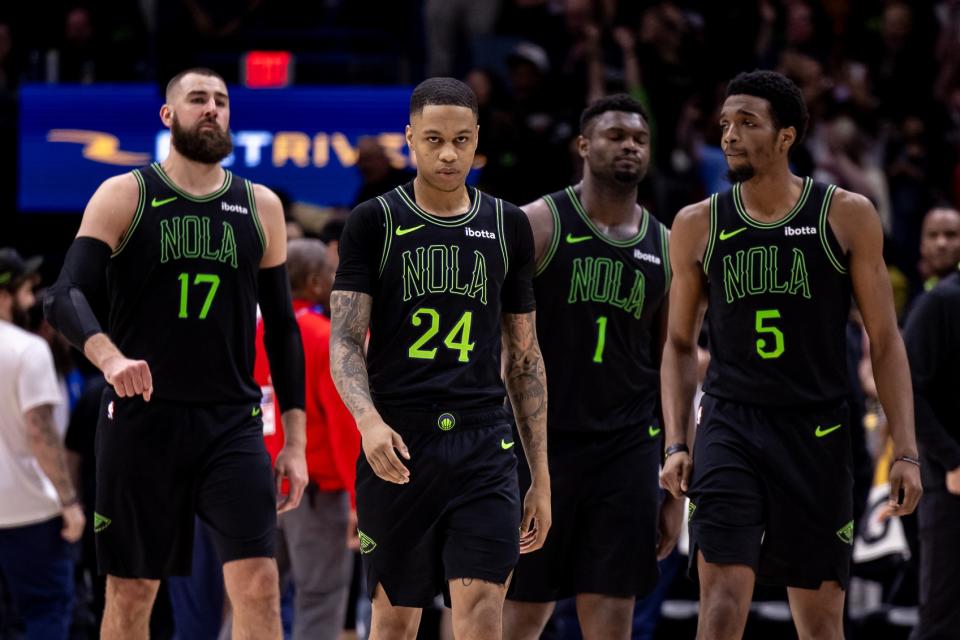
2024-25 Cap Figure: $148,122,338
Cap Space Projection: No cap space; not unduly tax-threatened
Jonas Valanciunas’s $15,435,000 contract – which has been an underpayment for his services – expires this summer. If they lose him, they can spend the mid-level, but if they lose him, they will also need a new center. New Orleans’s situation is therefore somewhat akin to Cleveland’s above, with the difference being that Valanciunas is more important to the Pelicans than Isaac Okoro is to the Cavaliers.
Sacramento Kings

2024-25 Cap Figure: $152,117,412
Cap Space Projection: No cap space; slightly tax-threatened
Malik Monk’s contract expires this summer, and, having become a 15/5 player this season, he will want a pay rise from his $9,945,830 2023-24 salary. Assuming they can convince him to accept the maximum they can give him using Early Bird rights, the Kings are in a position to give it to him while also retaining at least the taxpayer MLE to add some external talent. The margins, though, are not huge, so they might need to move someone like Trey Lyles to create breathing space.
Portland Trail Blazers

2024-25 Cap Figure: $160,987,734
Cap Space Projection: No cap space; tax adjacent, as constructed
The rebuilding Blazers are still a long way from having the salary cap room that a rebuild usually entails, but these things take time to coordinate. Specifically, they want to – and should be expected to – find homes for Deandre Ayton and Malcolm Brogdon over the summer, as well as possibly doing the same for Robert Williams and Matisse Thybulle. Much is therefore in limbo. Yet with a rebuilding journey to go on and a timeline to establish, it seems certain that the Blazers will be cutting both immediate and future salaries.
Memphis Grizzlies

2024-25 Cap Figure: $161,272,159
Cap Space Projection: No cap space; tax adjacent
Trading away Steven Adams for the expiring salary of Victor Oladipo at the deadline helped create some wiggle room for the Grizzlies under the luxury tax threshold, but it is still something they will be brushing up against. Use of the full MLE right now would put them back over it. It is always going to be difficult juggling the large salaries of Ja Morant, Desmond Bane and Jaren Jackson Jr while dodging anything punitive; if the Grizzlies want to make meaningful upgrades to their team this offseason, therefore, then Luke Kennard’s $14,763,636 team option is looking vulnerable.
Atlanta Hawks
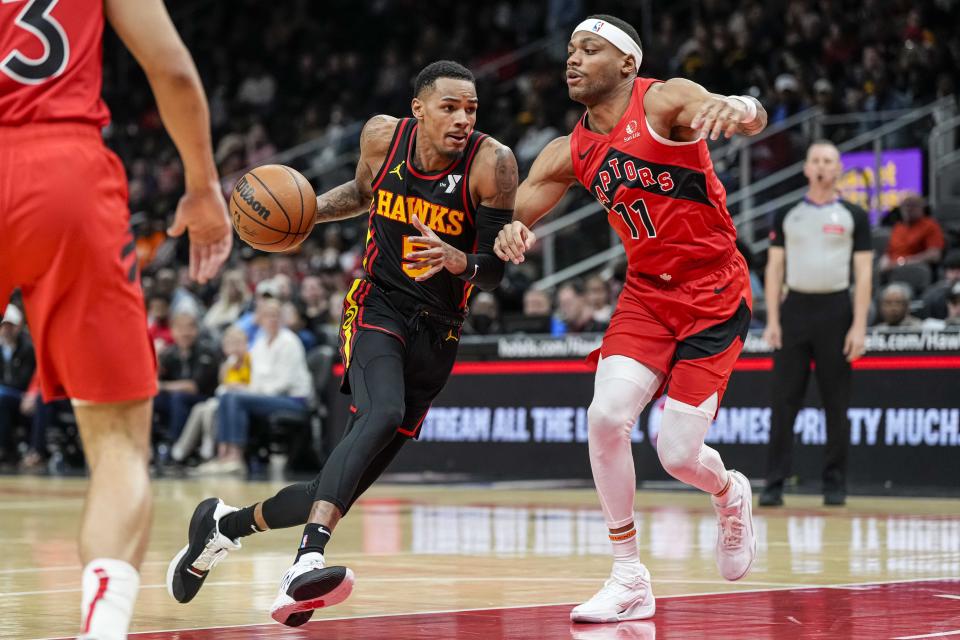
2024-25 Cap Figure: $163,292,530
Cap Space Projection: No cap space; tax adjacent
Bogdan Bogdanovic’s declining salary and the expiration of Patty Mills’s contract offset the rising cost of Onyeka Okongwu’s extension, and the Hawks are safe enough from the luxury tax to not do anything drastic. That said, considering their underwhelming play this season, perhaps they will want to do something drastic. If nothing else, considering how likely a Dejounte Murray trade looked at the deadline, perhaps it should be expected once again.
Los Angeles Clippers

2024-25 Cap Figure: $170,345,074
Cap Space Projection: None; over the cap, taxpaying team
The cap figure outlined above does not include James Harden, and the whole point of trading for Harden was to keep him beyond this season. A $200-plus million payroll is therefore incoming, and, with a player option of his own, Paul George’s situation complicates everything. The plan will be to extend George, re-sign Harden, dump or stretch PJ Tucker, pay the punitive effects and get some discounted role players with the minimum salary. And it might all be possible.
Dallas Mavericks

2024-25 Cap Figure: $171,176,442
Cap Space Projection: None; over the cap, taxpaying team
As things stand, the Mavericks are right on the luxury tax line. But the good news is that they only have minimum-salary contracts expiring, so there are no big re-signings to account for. Considering the timeline they are on, their title aspirations, and the deep pockets ownership has shown in the past, spending their taxpayer MLE and whatever else they can to reinforce the team seems both inevitable and wise; they are so close to the tax line as constructed that they will be able to do so without running afoul of the dreaded new “second apron”.
Golden State Warriors
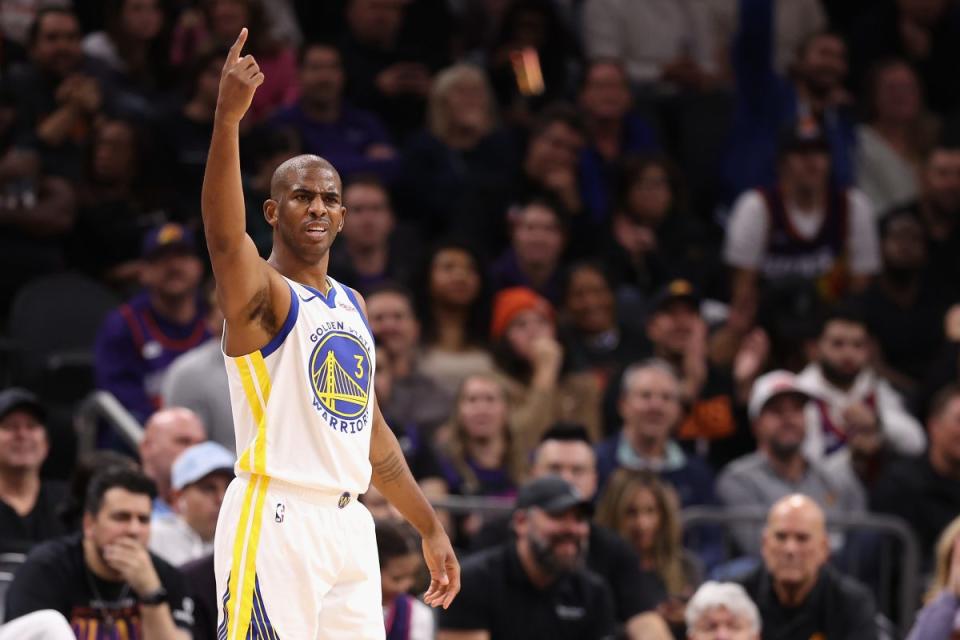
2024-25 Cap Figure: $174,818,460
Cap Space Projection: None; over the cap, taxpaying team
Considering their history-making tax bills of recent seasons, this is a relatively sedate payroll for the Warriors. And considering their recent pursuit of LeBron James, it is fair to say they are willing to add to it again. The above amount does not include Klay Thompson, who will need to be re-signed for a much lower price than his current $43,219,440 salary, but the “fourth guy” cycle seems likely to continue, with Chris Paul’s unguaranteed $30 million 2024-25 salary looking vulnerable on draft night. As ever, there is not much point in the Warriors holding back any bullets now. They are all in. So expect their payroll to cross $200 million once again.
Minnesota Timberwolves

2024-25 Cap Figure: $176,345,709
Cap Space Projection: None; over the cap, taxpaying team
The above figure does not include any of Mike Conley, Kyle Anderson, Monte Morris or Jordan McLaughlin. Conley’s big $24.36 million contract expires this summer, but the savings are eaten up by the start of Anthony Edwards and Jaden McDaniels’s second contract, which pushes the team into a luxury tax territory that they will not escape from. With nearly $150 million going to the Edwards, McDaniel, Karl-Anthony Towns and Rudy Gobert quartet alone, there is no chance of that beyond a substantial deconstruction of the team that would make no sense at this moment given that they are finally producing on the court. The Wolves therefore need to figure out how they can keep together their point guard rotation, or build a new one, without going over the $200 million threshold. It will not be easy.
Los Angeles Lakers
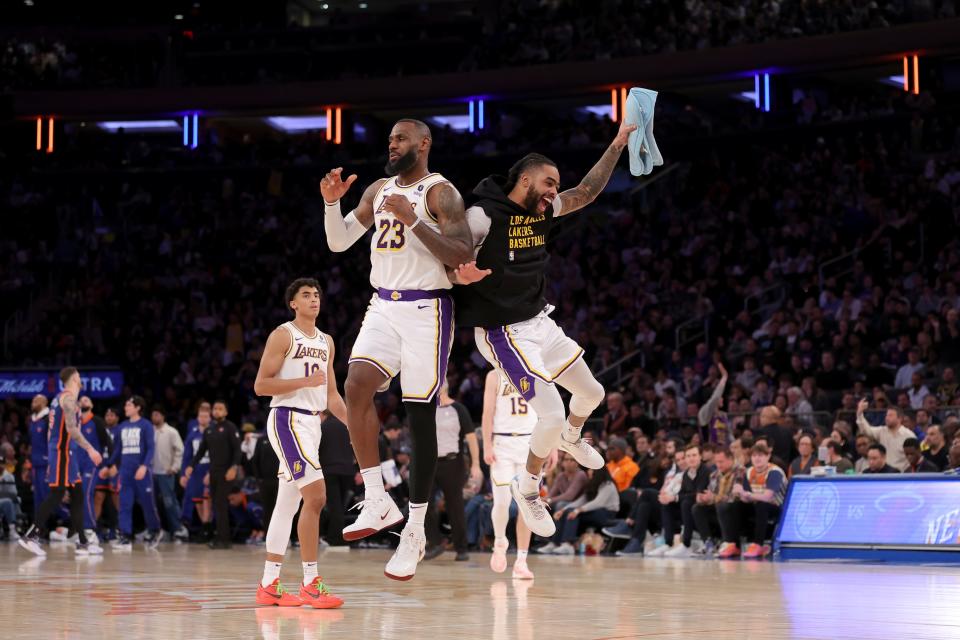
2024-25 Cap Figure: $178,753,952
Cap Space Projection: None; over the cap, taxpaying team
Unless both LeBron James and D’Angelo Russell decline their player options and leave as free agents, the Lakers will be an over-the-cap, over-the-tax team reliant upon the taxpayer MLE and some well-used minimum salaries. And if both James and Russell do leave, then the Lakers will have much bigger problems than the luxury tax anyway.
Miami Heat
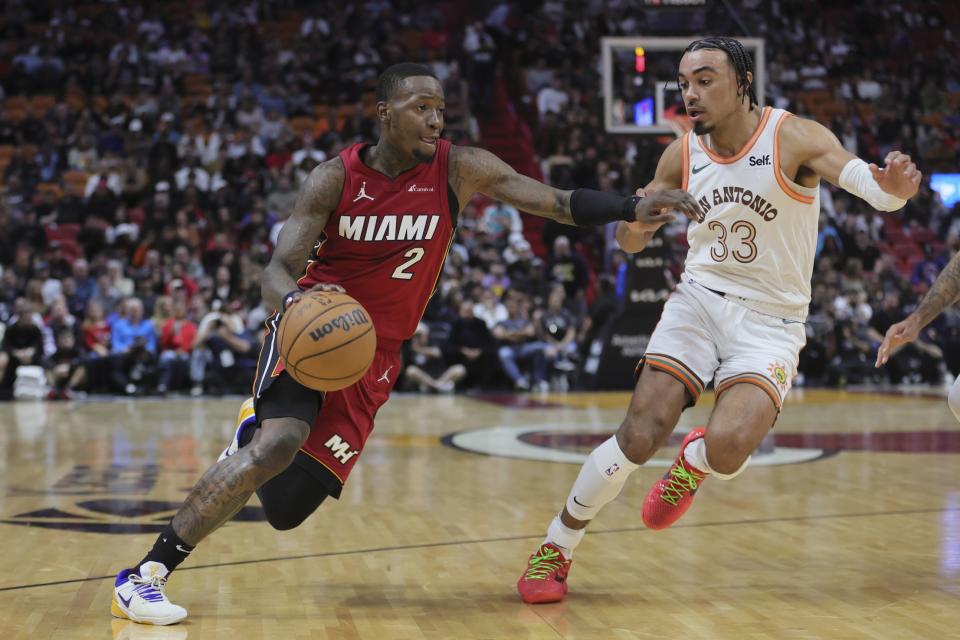
2024-25 Cap Figure: $180,178,330
Cap Space Projection: None; over the cap, taxpaying team
Historically, the Heat have been one of the most tax-reticent teams in the two-decade history of the NBA’s luxury tax. This did not stop them from acquiring Terry Rozier and his $24,924,126 in 2024-25 salary at the trade deadline. But if the past is to dictate the present, it will likely mean they need to finagle the rest of the roster, and will not be able to join the Really Big Spenders listed below. A luxury tax bill looks unavoidable in 2024-25, but that does not mean the Heat will want to pay a big one.
Milwaukee Bucks

2024-25 Cap Figure: $182,882,301
Cap Space Projection: None; over the cap, taxpaying team
The Bucks have been among the league’s biggest payrolls for the last few years, and having traded for Damian Lillard, that will not stop now. With more than $125 million committed to Dame and Giannis Antetokounmpo alone in the 2026-27 season, though, the punitive damages incurred by the enormous tax bills, repeater status and the new second apron will now start to sting. Under the new CBA, teams over the second apron will have no MLE at all to work with, only the minimum salary. And while the allure of playing with that duo and being in with a title chance will greatly expand the range of who might be willing to sign for just that amount, it perhaps would be nice to have more flexibility than that.
Denver Nuggets

2024-25 Cap Figure: $188,552,127
Cap Space Projection: None; over the cap, taxpaying team
Kentavious Caldwell-Pope has a $15,440,185 player option for 2024-25, and he may well decline it. If he does, there exists a chance that the Nuggets can dodge the higher echelons of the luxury tax or at least the second apron. But if he does, the Nuggets will have a KCP-sized hole on their team, and while their heavy implementation of youth this season should make roster turnover more palatable in the future, they also have a title window open for at least the next three years. Now is not the time to be prioritizing money; keeping Caldwell-Pope, and seeing what can be added via the apron-restricted MLE, seems to be the way forward.
Phoenix Suns

2024-25 Cap Figure: $190,268,181
Cap Space Projection: None; over the cap, taxpaying team
Big Threes don’t come cheap, and with Devin Booker getting a pay jump from $36,016,200 to $49,350,000 next season as the first year of his “super max” extension kicks in, any savings from the expirings of Royce O’Neale and Grayson Allen are immediately wiped out. In assembling that trio of Booker, Kevin Durant and Bradley Beal, of course, the Suns stated their intentions to pay the cost to be the boss; however, with the trio costing $150 million by themselves, the Suns might be looking at a history-making payroll and tax bill. These are not the Phoenix Suns of old. But they will have the second apron to contend with.
Boston Celtics
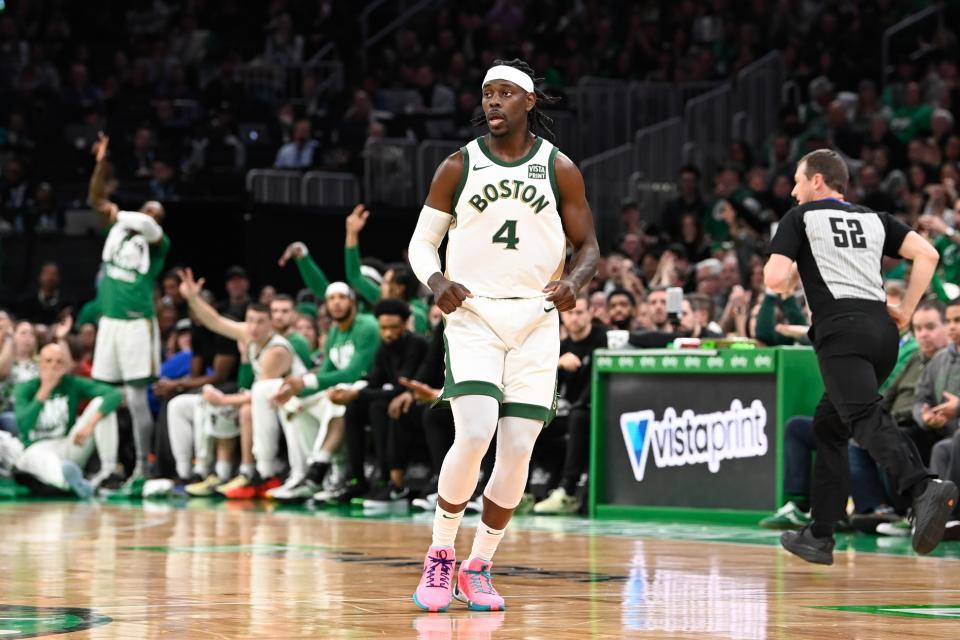
2024-25 Cap Figure: $197,012,551
Cap Space Projection: None; over the cap, taxpaying team
By design, since committing to the history-making extension of Jaylen Brown, the Celtics are extremely far over the cap, and will have only minimal spending resources to work with. The only way this is not the case is if Jrue Holiday declines his $39,403,894 player option for 2024-25 and leaves as a free agent. But while declining it might happen, declining and leaving seems highly unlikely, and so the Celtics will be encumbered by the aforementioned tax and apron limitations.

 Yahoo Sport
Yahoo Sport 



































































